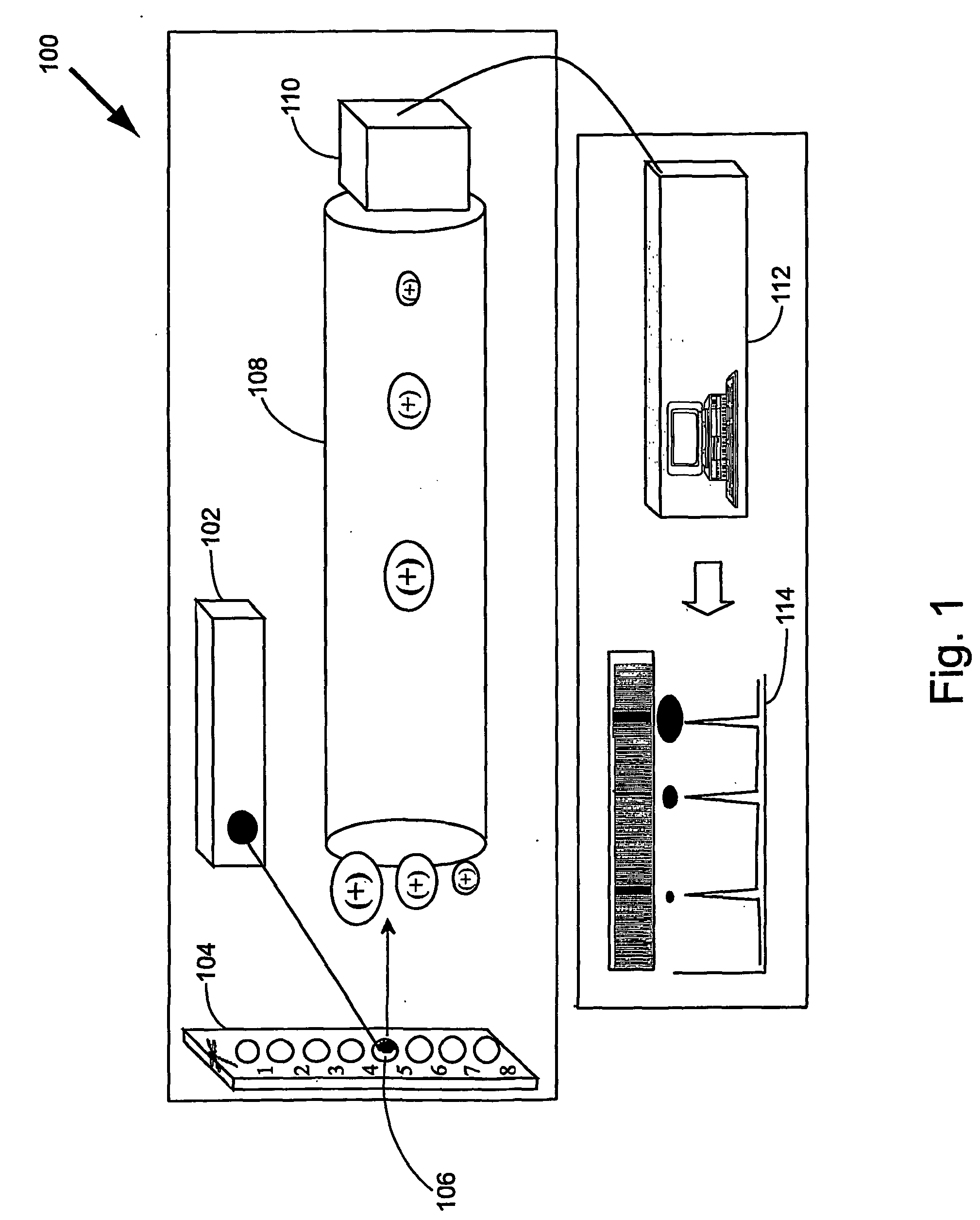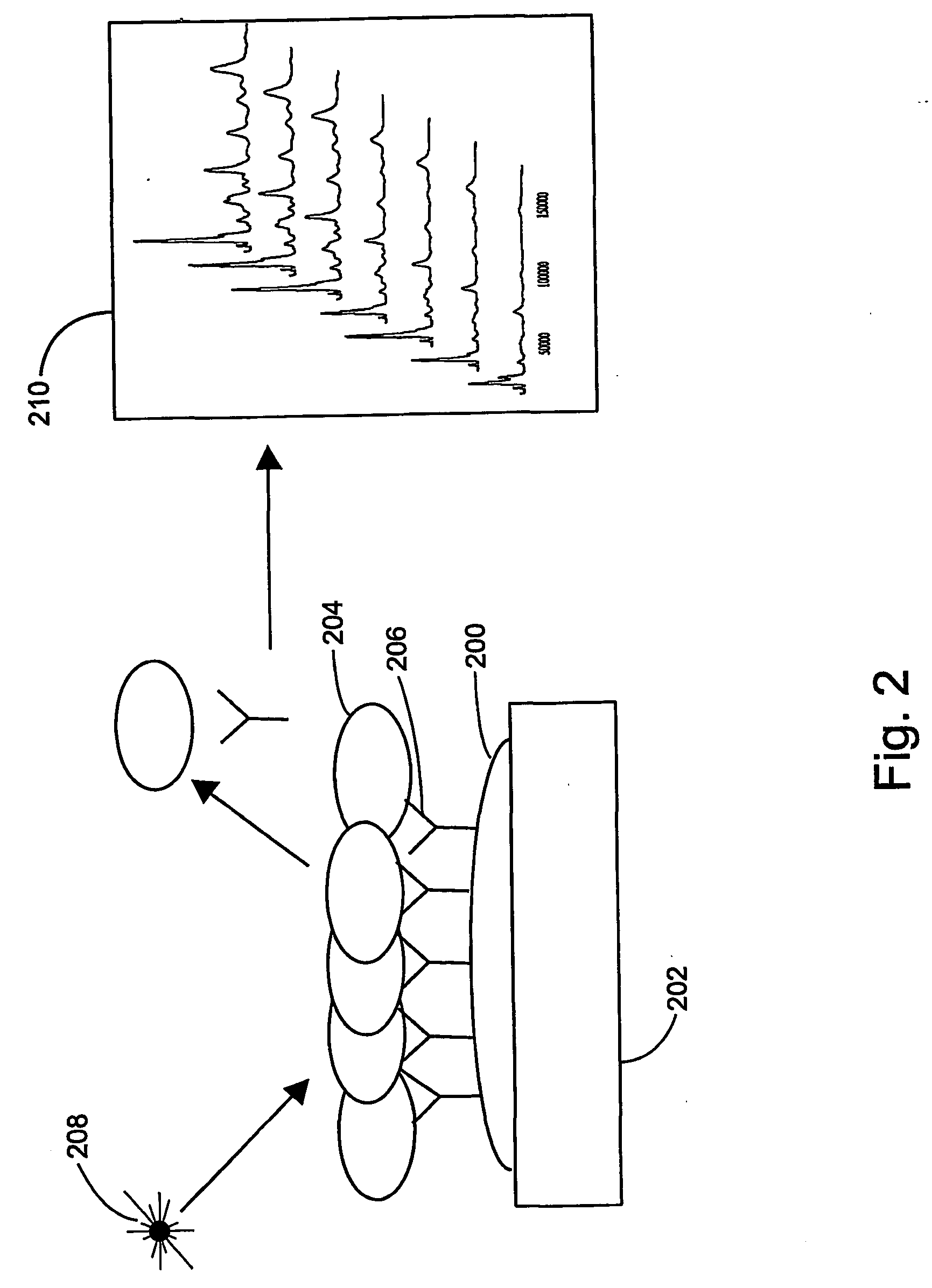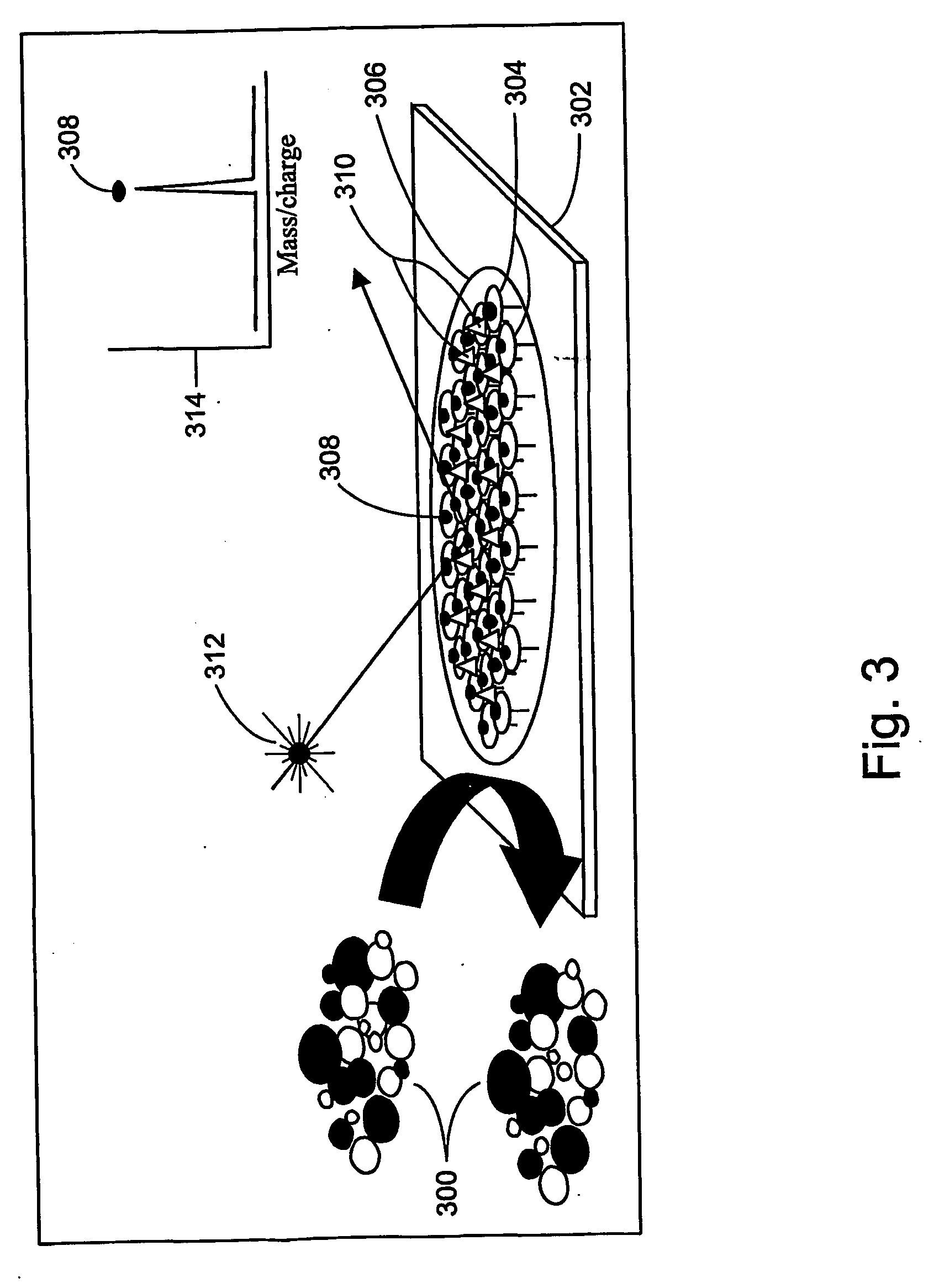Methods and devices for quantitative detection of prostate specific membrane antigen and other prostatic markers
a prostate specific membrane and prostatic marker technology, applied in the field of methods and devices for quantitative detection of prostate specific membrane antigen and other prostatic markers, can solve the problems of high invasiveness of certain prostate cancer screenings in current use and generally lack sufficient sensitivity to yield early detection, cystoscopy is another common invasive prostate cancer diagnostic technique that also lacks adequate sensitivity to detect early prostatic cancer, and present diagnostic tests are not completely satisfactory
- Summary
- Abstract
- Description
- Claims
- Application Information
AI Technical Summary
Benefits of technology
Problems solved by technology
Method used
Image
Examples
Embodiment Construction
I. Introduction
[0067] Significant technological advances in protein chemistry in the last two decades have established mass spectrometry as an indispensable tool for protein study (Carr et al., (1991) "Integration of mass spectrometry in analytical biotechnology," Anal. Chem. 63(24):2802-2824; Carr et al., "Overview of Peptide and Protein Analysis by Mass Spectrometry," Current Protocols in Molecular Biology, John Wiley & Sons, Inc., New York, unit 10.21, pp. 10.21.1-10.21.27 (1998); Patterson, "Protein Identification and Characterization by Mass Spectrometry," Current Protocols in Molecular Biology, John Wiley & Sons, Inc., New York, unit 10.22, pp. 10.22.1-10.22.24 (1998); and Siuzdak, Mass Spectrometry for Biotechnology, Academic Press, San Diego (1996)). Mass spectrometry is additionally facilitating the analysis of nucleic acids (Krahmer et al., (2000) "MS for identification of single nucleotide polymorphisms and MS / MS for discrimination of isomeric PCR products," Anal. Chem. 7...
PUM
| Property | Measurement | Unit |
|---|---|---|
| concentrations | aaaaa | aaaaa |
| molecular weight | aaaaa | aaaaa |
| molecular mass | aaaaa | aaaaa |
Abstract
Description
Claims
Application Information
 Login to View More
Login to View More - R&D
- Intellectual Property
- Life Sciences
- Materials
- Tech Scout
- Unparalleled Data Quality
- Higher Quality Content
- 60% Fewer Hallucinations
Browse by: Latest US Patents, China's latest patents, Technical Efficacy Thesaurus, Application Domain, Technology Topic, Popular Technical Reports.
© 2025 PatSnap. All rights reserved.Legal|Privacy policy|Modern Slavery Act Transparency Statement|Sitemap|About US| Contact US: help@patsnap.com



